Introducción
Long gone are the days of analog boomboxes; say hello to portable, wireless speakers. The popularity of digital musical content demands a new and innovative way of listening to our music. Meet the Sonos Play:3 All-in-One Wireless Music Player with 3 Integrated Speakers.
Follow us on Twitter and Facebook for the latest teardown news.
Qué necesitas
-
-
Ladies and gentlemen, allow us to introduce the Sonos Play:3 all-in-one wireless* music player.
-
*Amazon puts it best: The Play:3 "easily connects to your wireless router with included Ethernet cable or wirelessly anywhere with addition of Sonos Bridge." So if you want to use it wirelessly, you'll need to shell out another $50 for the Sonos Bridge. Otherwise, Ethernet's the only way to connect to it.
-
What exactly does this all-in-one music player contain? We're glad you asked:
-
Three-driver speaker system—two mid-range woofers and a tweeter
-
A classy grey box that works both horizontally or vertically
-
-
-
A flick of our spudger allows us to remove the speaker grille with relative ease, although the gooey adhesive on the perimeter clips was reluctant to let go.
-
Our first peek inside reveals exactly what we expected—speakers!
-
-
-
What do we have here? If it isn't our good friend, the "Warranty void if opened" sticker.
-
Alas, cousin, we hardly knew ye.
-
Just as we thought, there is a hidden screw located underneath the "you shall not pass" sticker.
-
The fragile sticker comes off easily, but leaves its impression on the front bezel: a repeating pattern of the word "VOID." It seems Sonos doesn't want users servicing their own players
-
-
-
This is what opening Pandora's box must feel like. Let's hope that this action does not have severe and far-reaching consequences.
-
Inside the Sonos Play:3 is a playground of wires and circuit boards, arranged methodically for space efficiency.
-
Before we can free the front panel assembly, we must disconnect the speaker wires and pull out what appears to be a Wi-Fi antenna.
-
So if the Sonos requires a networking cable, what's this for? More on this in just a few steps…
-
-
-
-
How difficult is it to replace the two mid-range drivers and the one tweeter? Not very difficult. Each is held in by four Phillips screws, for a total of twelve to pull out the trifecta of music-emitters.
-
With these speakers out of the front panel, maybe we can drop something a little larger in there.
I think the link for MTX Jackhammer changed to this one.
Can you just provide specs to look for? The links are no longer valid.
-
-
Herramienta utilizada en este paso:Digital Multimeter$19.99
-
The mid-range drivers have pretty impressive permanent magnets, accounting for 37% of the device's total 5.7 lbs.
-
Want more specs on the speakers? So did we. Since Sonos is hush-hush about them, we decided to do some poking and prodding of our own. Here's what we came up with:
-
2 ¾" mid-range drivers (2" composite speaker cones)
-
4.8 Ω measured resistance
-
1" silk dome tweeter
-
3.7 Ω measured resistance (tweeter)
-
Why do we stress that these are measured resistances? While speaker ratings are given in ohms, the unit of resistance, they're actually values of impedance, which is dependent on the specific frequency being played. Home stereo speaker impedances are usually 8 Ω, but because a multimeter can only read resistance, our measurement will be lower.
-
-
-
Getting to the Play:3's motherboard was no Herculean task, even though it did require defeating the Hydra cables, as well as some Phillips screws.
-
No matter what obstacles are put in our way, we will go the distance to dismantle this device.
-
-
-
We found three antennas in the Sonos Play:3, all attached to a communications card on the motherboard and held in place with a soft glue.
-
Through a combination of the three antennas, the Play:3 communicates over SonosNet, a proprietary wireless mesh network that connects the player to a Sonos Bridge or another player (but not your home wireless network).
-
The length of the antenna traces are listed on the antenna board (10 and 23.2 mm). The antenna design seems to be that of an Inverted F-Antenna, common in small electronics and implemented to reduce antenna size and improve multiple input multiple output (MIMO) systems.
-
-
-
With the motherboard removed and stripped down, we finally get to see the control behind the music. The following prominent ICs power this device:
-
MPC8314VRADDA low-power PowerQUICC II pro 266 MHz processor
-
STMicroelectronics NAND 512W3A2SN6
-
Nanya NT5TU32M16DG-3C 512 Mb DDR2 RAM
-
STMicroelectronics STA339BW 2.1-channel high-efficiency digital audio system, capable of outputting 2 x 20 W into 8 Ω at 18 V (we assume these two chips make up the "three class-D digital amplifiers" listed on Sonos' website)
-
Maxim 78Q2123 10/100 fast ethernet MicroPHY
-
HanRun HY601680 10/100Base-T transformer module
-
On the back: Texas Instruments TPS54226 4.5 V to 18 V input, 2 A synchronous step-down SWIFT converter
-
-
-
Proceeding with caution, we carefully remove the "AC 120/240V, 50-60Hz, auto-switchable" power supply board.
-
Behold, the towering metropolis that is populated by an array of capacitors and inductors.
We have noticed a design flaw with this circuit board, after fixing quite a few of these now. The screw coming out of the heatsink next to the caps gets very hot. It's proximity to the caps makes the caps blow and burn out the circuit board. We have replaced many of the caps with better rated ones, and bent them away from the screw as best we can, but they will eventually blow again. If they increase the space between this screw coming out of the heatsink away from the caps, then the reliability of the device will be much improved, and stop these from blowing every 2-4 years of use.
I cover up the offending screw with plenty of hot glue to isolate the heat to a degree, none have come back as yet.
Charles -
-
-
-
The short clearance inside this case almost got us down, until we pulled out the flexible shaft attachment from our 54 Bit Driver Kit.
-
With yet another rarely used tool in hand, we snake a Phillips #0 bit into the case's interior, pull out a few screws, and free the button board.
-
While the button board itself is easy to replace (with the correct tools), it's a bit of a bummer that you have to take most of the device apart to get to it.
-
-
-
At long last we've found the advertised bass radiator, a passive speaker cone secured in the very back of the case that forms an inexpensive alternative to a powered subwoofer.
-
Interested in knowing how a bass radiator works? Wonder no more. As the mid-range drivers move back and forth, they create air pressure inside the enclosure. A bass radiator uses that air pressure to create a "bassier" sound, without taking up excess room. It's similar in principle to a reflex port in an enclosure, without taking up a lot of space.
-
-
-
Sonos Play:3 Repairability Score: 8 out of 10 (10 is easiest to repair)
-
All major components are held in place with Phillips screws, many of them the same size.
-
The entire disassembly is pretty straightforward.
-
Modular design means that nearly every component can be replaced individually.
-
Glue and adhesive are not impossible to overcome, but definitely need to be reapplied to dampen vibrations.
-
A "warranty void" sticker stands between you and any repairs.
Sonos won't repair anything
Sound quite good but should be support lossless audio from apple music while it's not bad but lousy audio limited their potential,sonos should fix this but their apps are really terrible which sonos seems not give a %#*@ about it. Now I know why many people go back to Bose.if I opened it up I will put some car door sound deadening to prevent the speaker vibrate at louder volume.
-
37Guía Comentarios
How would I go about replacing the wireless card since it is a proprietary wireless card?
For those that want a pre-amp line out, could you connect to the audio bus feeding the amplifier chips? Their input would be a pre-amp level for these chips?
You'd probably want to feed them into an op-amp, or you would change the characteristics of what you feed the amp.
Preamp line-out. I'm not certain, but sometimes these class D amplifiers act as the D2A as well as the amplifier, so there is no internal low level analog signal to tap off of. I think a simple 22:1 resistor divider from the speaker terminals would do it for you. You may have to combine the divider outputs from both the midrange and the tweeter. Likely the response will have been tailored for these specific drivers by the digital crossover, but that's probably OK. I would come off the positive terminal of each driver with a 2.2k resistor. Connect the other end of each resistor together and then to a 100 ohm resistor to ground. The line level will be across the 100 ohm resistor.
It would be a complex wiring diagram for a pre-amp line out. It would involve purchasing and developing a circuit for a DAC chip that supports I2S. Either that or a chip which can convert said input into SPDIF. The good news is the amplifier chip is also the DSP, so if you managed to pull and decode the I2S data you would have an unaltered digital audio signal. You might lose volume control unless you pulled that into your DAC as well. It would still be an interesting project if one had the time and money. Of course Sonos could just stop ripping people off with the Connect...
I have a Sonos Play 5 that I used outside - and one of the components got just a little moist - so one or more of the many electronic elements in there is fried. But I have no reason to think any of the speakers are bad... I have the patient open on the table now, and I can take out any part. So if anyone needs a speaker or connector etc I guess post here. Or, if you have a Play 5 with a bad speaker and the electronics are still good, and you want to get rid of it, let me know!
Interested in the center subwoofer.
tantalum181 @ yahoo.com
Interested in upper circuit card assembly from first gen play 5 if you still have it
J Y -
Anybody know how to add a line in jack? this would be great for non wifi audio players?
Please warn us here if you ever find a way to add a line in for the Play:3!
Looking at the datasheet of the STMicroelectronics STA339BW (Class D Power Amplifier on the board), it seems as if the amplifier only accept Inter-Integrated Sound (I2S) as input. This is digital sound data from the embedded system circuitry, so I don't think an auxiliary input (analog) would be possible without some massaging and extra components. Even then, the fidelity of the audio would be decreased, since one would have to re-sample the analog signal (already coming from some DAC whose sample rate is 44.1 kHz or 48 kHz) to get an I2S signal. It would be akin to using a copier to copy an already-copied picture. The quality will just go down.
I'm currently trying to work out some way of playing my own selection of music (as I believe that is the primary concern for anyone with this device). I was thinking I would perhaps use a beaglebone to connect a spotify server. I'll let people know if I find anything that works out.
@kevin To play your own files you can just share any folder on your computer, NAS or phone and create the playlists on Sonos controller. Maybe I didn't get what you trying to do.
As for putting a line in on Play:3 would be more like a Hack a Day post than for an IFixIt because, as you said, it can't be done without extra components.
Maybe a Play:5, Playbar or CONNECT teardown would show the circuitry used for analog input.
Sonos added a firmware update after this article was written where they no longer require the proprietary SonosNet and now connects directly to the router on wifi after you have done the setup to configure the wireless settings.
Now an even better and cheaper product to own but the competition is catching up..
Hi all, the transformer in my play 3 is damaged does anyone know of a replacement transformer that I can install?
I was wondering if i can somehow connect to a "pre-amplified" signal from Sonos and add it to a new amplifier (i.e. replacing an expensive Sonos connect amp) with a Sonos1... Adding a nice KEF speakers amplified by a Marantz Amplifier... Any ideas if you know someone who have ever done such?
thank you
Trying to figure out a way to hack the Play 3 to accept input from Chromecast by physically connecting the Chromecast audio puck somehow. I have one Play 3 which sounds great, but going to a centrally controlled Chromecast system controlled by a Google Home device due to lower cost.
A warranty stick DOES not "stand" between you and repairs.
Magnuson–Moss Warranty Act Act of 1975 prohibits companies from denying warranty claims if the customer used non mfr parts. Nor can a mfr prohibit you from opening your hardware. Taking apart your hardware to clean it from dust (which causes heat build up and component failure) does not violate a warranty. If a company denies a claim simply because something was opened that is indeed an illegal practice. A company will only get away with this sort of practice until it bumps into someone willing to fight. Then their game is over.
Anybody know if this device will continue to function after removal of the communications board. I want to remove all wi-fi from Sonos permanently and use ethernet-based system only. Have tried disabling wi-fi signal via commands sent through network (as seen on You Tube), but question the effectiveness of this method. Thanks.
K.D.
Did you ever figure this out? I am looking to do the same thing to mine.
Mingo -
I'm debating tearing out all the electronics from my Play 3 and replacing them with an aftermarket amp + Chromecast audio. My only concern is the “2.1” nature of the system. The Play 5 appears to be a “Mid-Mid-High” mix and most COTS 2.1 amplifiers are “Mid-Mid-Low” Any thoughts on how to power only the speakers with a COTS amplifier?
Paryloc can waterproof any Sonos using Nano-Coating technology to make them last in real high humidity moisture areas.
unlike Sonos stating its protected from humidity. we cant see how when the ethernet plug is giving full access to moisture and humidity accesses.
also the top has many holes open right on the top board that is no way protected from any outdoor issues.
we can make any sonos last for many more years in the rain even.
www.paryloc.com
info@paryloc.com
I know this is an old thread but gonna try anyway. I blew the dust off my play 3 and was going to attemp well I’m going to hook up a blue tooth device into the speakers. I will figure it out with trial, error, possibly lots of soldering and heat shrink but wondered if anyone could help me on where to wire it in to make it work with the same sound quality. I’m missing the part that hooks into my router and would like to have it for camping trips anyway. If it’s not possible that’s fine too I have just done it with several othe speakers and systems and had good success. Thanks
Any suggestions for a crossover design. My Play:3 is dead and so will just convert it to a passive center channel speaker.
Est-ce que vous connaissez une boutique qui pourrait me convertir mes 2 Sonos play3 en enceintes de base avec line in Jack 6.35 ?
Merci
MP svp
Can anyone help me? Where can I get a power board for a Play 3?
Perhaps buy a "for parts only" Play 3 on eBay?
This speaker have very "boxy sound" do you think use some deadening foam on the speaker box wall and some polyfill cotton will improve the overall sound quality?











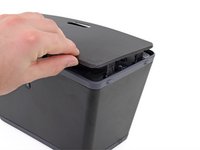
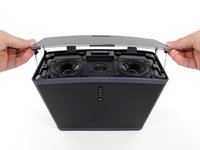



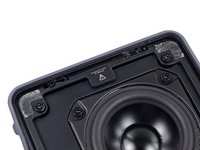
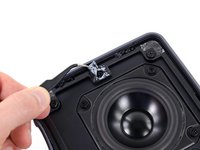
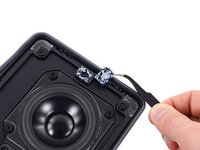


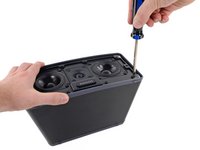
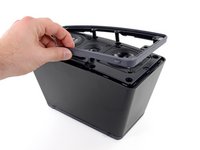



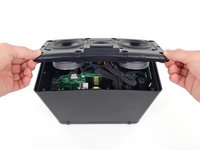
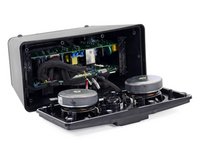
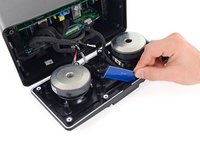



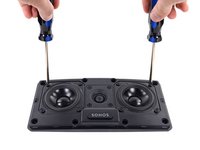
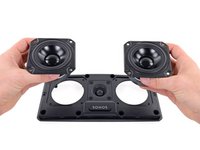
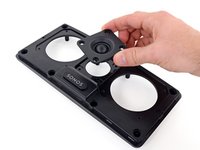



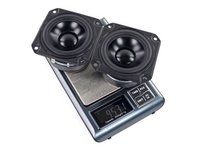
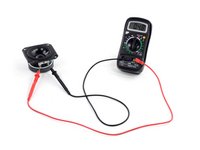



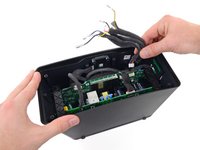
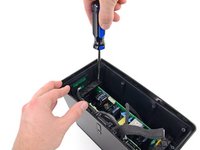
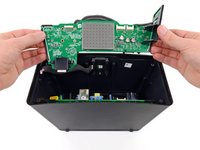



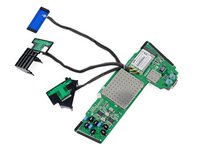
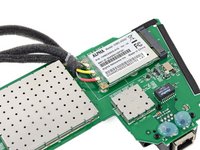



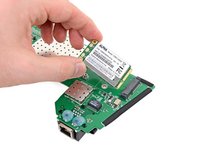
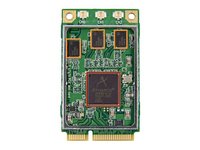



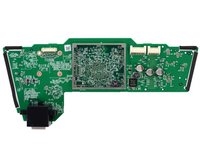



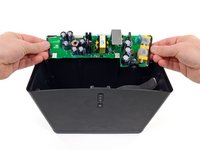
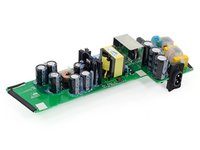
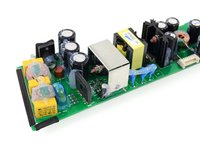



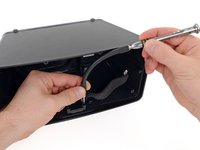
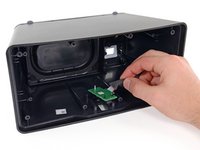
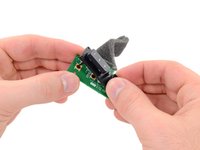



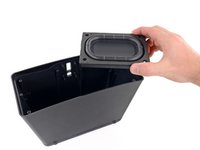
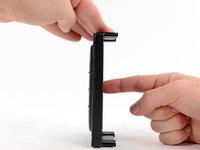
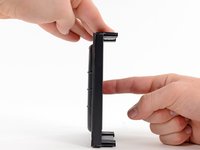


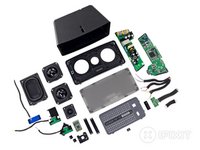
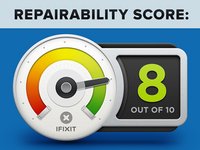

This is of course not correct, it is fully wireless.
Thorium Prime - Contestar
This is no longer correct. Sonos discontinued the bridge and it's no longer necessary for use with the app is all you need.
Raj Menage - Contestar